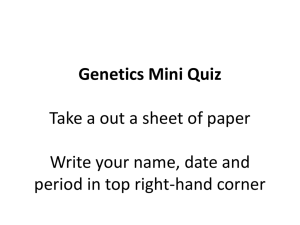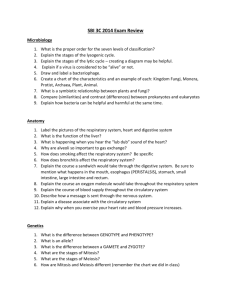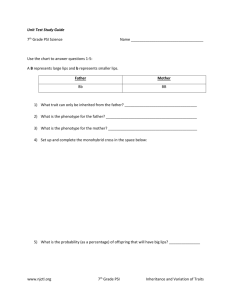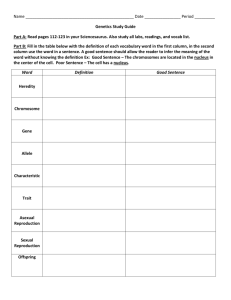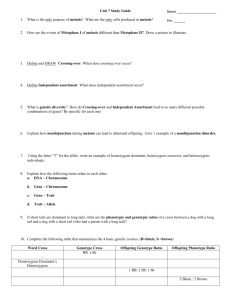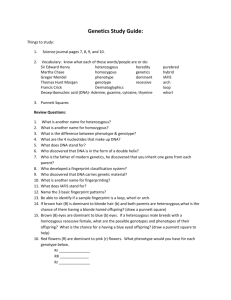Name: Date: SGO Study Guide: Test is on Friday, May 29th Section
advertisement
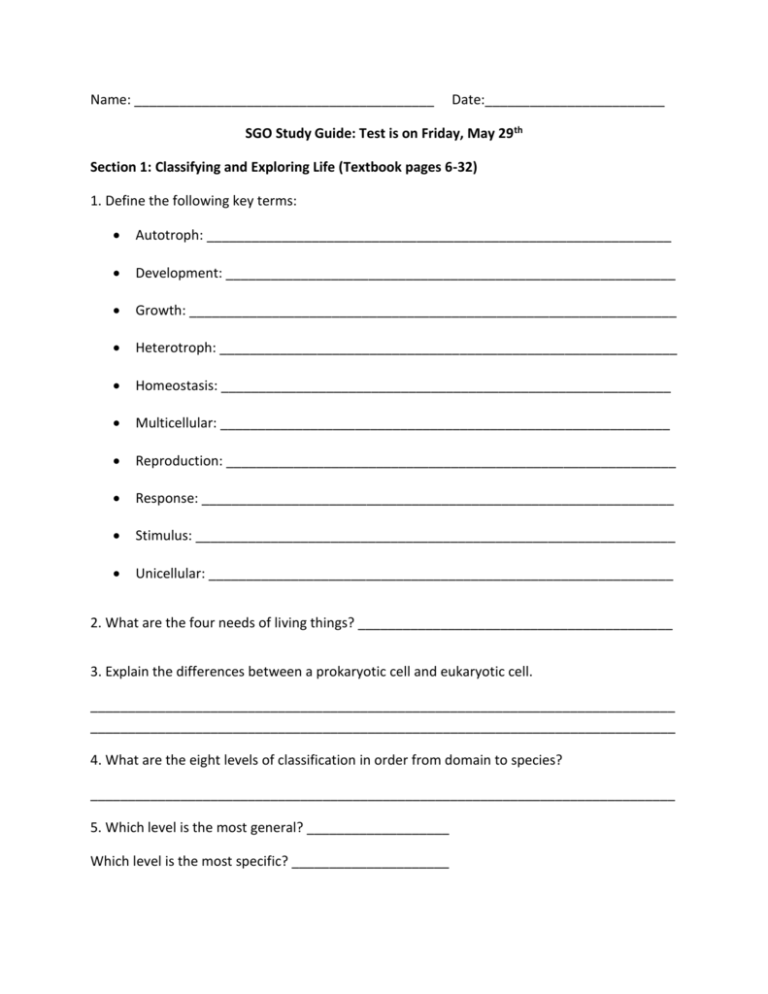
Name: ________________________________________ Date:________________________ SGO Study Guide: Test is on Friday, May 29th Section 1: Classifying and Exploring Life (Textbook pages 6-32) 1. Define the following key terms: Autotroph: ______________________________________________________________ Development: ____________________________________________________________ Growth: _________________________________________________________________ Heterotroph: _____________________________________________________________ Homeostasis: ____________________________________________________________ Multicellular: ____________________________________________________________ Reproduction: ____________________________________________________________ Response: _______________________________________________________________ Stimulus: ________________________________________________________________ Unicellular: ______________________________________________________________ 2. What are the four needs of living things? __________________________________________ 3. Explain the differences between a prokaryotic cell and eukaryotic cell. ______________________________________________________________________________ ______________________________________________________________________________ 4. What are the eight levels of classification in order from domain to species? ______________________________________________________________________________ 5. Which level is the most general? ___________________ Which level is the most specific? _____________________ Section 2: Cell Structure and Function (Textbook pages 40-74) 1. What is the function of the following organelles? Structure Nucleus Nuclear Membrane Rough E.R. Cell Membrane Centrioles Chloroplasts Mitochondria Nucleus Nuclear Membrane Rough E.R. Golgi Body Cell Wall Nucleolus 2. Label the following in an animal cell: Function Plant, Animal, or Both 3. Fill in the chart below on passive and active transport: Passive Transport Active Transport How do particles move? (include uphill or downhill AND low to high or high to low concentration) Does this process require energy? 4. What is osmosis? _____________________________________________________________ 5. Fill in the chart below on photosynthesis and cellular respiration: Photosynthesis Cellular Respiration Definition Balanced Chemical Equation What are the reactants? What are the products? Section 3: Genetics (Textbook pages 146-178) 1. Define the following key terms: Genetics: ________________________________________________________________ Trait: ___________________________________________________________________ Genes: __________________________________________________________________ Alleles: _________________________________________________________________ Dominant: _______________________________________________________________ Recessive: _______________________________________________________________ Homozygous: ____________________________________________________________ Heterozygous: ____________________________________________________________ Phenotype: ______________________________________________________________ Genotype: _______________________________________________________________ 2. Identify the following as homozygous dominant (HoD), homozygous recessive (HoR), or heterozygous (He). ______ Kk ______ NN _____gg ______QQ _______Ll _____xx ______Jj 3. For each genotype, identify the phenotype: Brown hair color is dominant over red hair color. BB: ________________ Bb:_________________ bb: _________________ 4. For each phenotype below, identify the genotype. There may be more than one genotype for each phenotype. Red flower color is dominant to white flower color. Red: __________________________________ White: _____________________________ 5. A woman that is heterozygous for freckles marries a man who is homozygous dominant for freckles, instead of no freckles. Create a Punnett Square to show the possible offspring. Percentage of offspring with freckles: ____________% Percentage of offspring with no freckles: __________% 6. A pink body sponge that is homozygous recessive for this trait is crossed with a yellow body sponge that is heterozygous for this trait. Create a Punnett Square to show the possible offspring. Percentage of offspring with pink body: ____________% Percentage of offspring with yellow body: __________% Section 4: Ecology (Use class notes, this section is not in the textbook.) 1. Define the following key terms: Abiotic Factors: ___________________________________________________________ Biotic Factors: ____________________________________________________________ Species: _________________________________________________________________ Population: ______________________________________________________________ Community: _____________________________________________________________ Ecosystem: ______________________________________________________________ Carrying Capacity: ________________________________________________________ Limiting Factors: _________________________________________________________ 2. What causes populations to increase? ____________________________________________ What causes populations to decrease? ______________________________________________ 3. What happens in a predator-prey relationship? ______________________________________________________________________________ 4. Why is a food web a better description of an ecosystem than a food chain? ______________________________________________________________________________ 5. Fill in the chat on the roles of organisms in an ecosystem: Organism Producer Definition Examples Consumer Carnivore Herbivore Omnivore Decomposer Scavenger 6. Interpret the food web below and answer the following questions: What is the producer in the food web? ________________ What organisms eat the plant? __________________________ __________________________ __________________________ What organisms does the wolf eat? _____________________ _________________________ List two different food chains consisting of at least three organisms: 1. 2.
